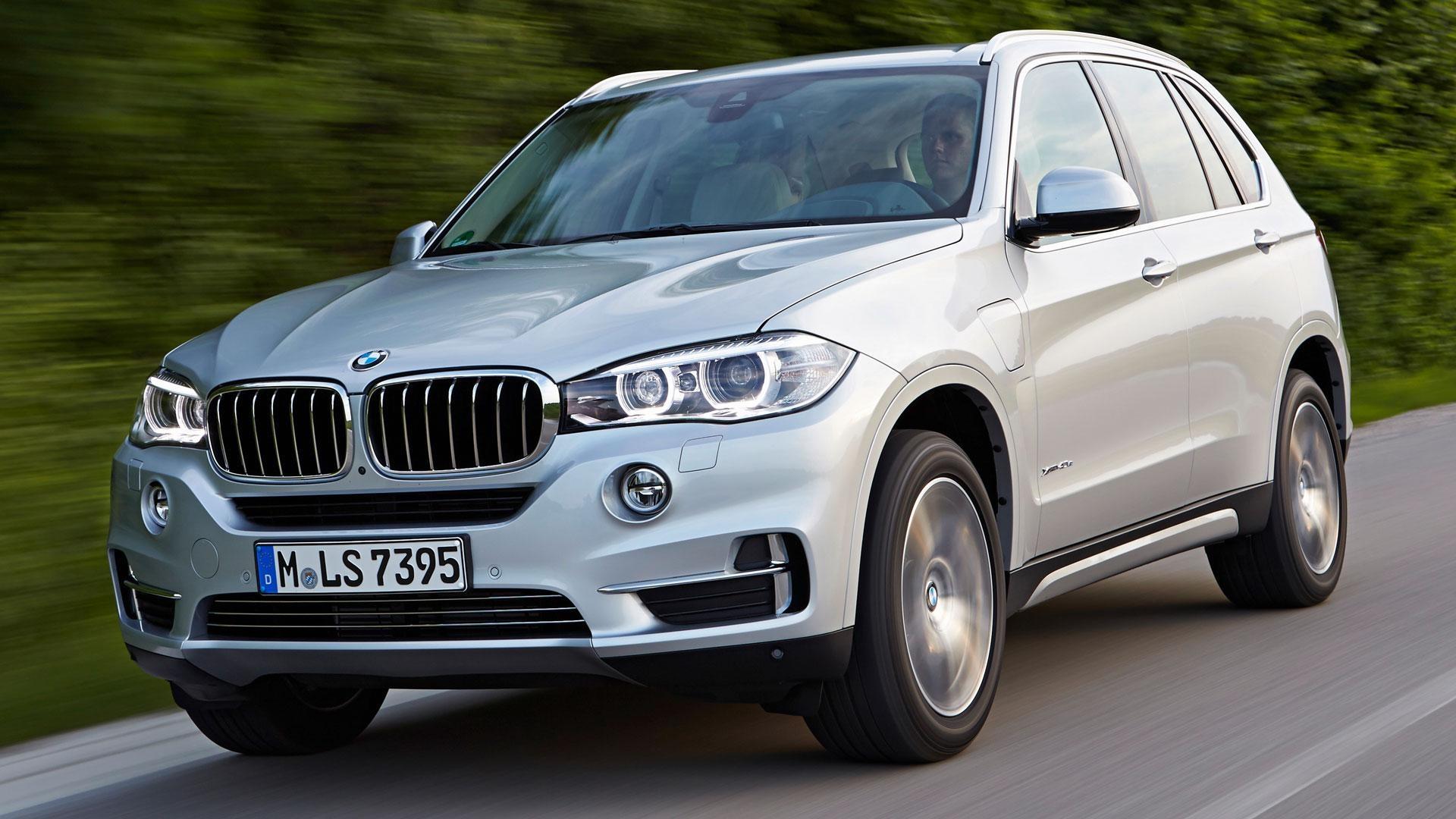As car manufacturers continue to strive for reduced emissions, hybrid vehicles have become an increasingly popular choice for buyers who aren’t quite ready to fully transition to electric cars.
The best hybrid vehicles offer better efficiency than traditional petrol or diesel models by combining a conventional combustion engine with one or more electric motors.
While many petrol cars are now equipped with mild-hybrid technology, the full hybrids offer the most significant benefits. These cars are capable of running entirely on electric power at low speeds, such as in heavy traffic, with the combustion engine only kicking in when necessary.
This can result in substantial savings in both fuel economy and emissions. Plug-in hybrids, which feature larger batteries and need to be recharged via a plug, can travel even further on electric power.
The good news is that there is now a wide range of hybrid vehicles to choose from. With options ranging from hatchbacks to family SUVs and MPVs, there’s a hybrid car for just about every kind of driver.
To make the decision process easier, our experts have thoroughly tested all the hybrid cars available in the UK, identifying the very best options.
Below is a selection of the best hybrid cars you can buy in 2025, along with answers to some frequently asked questions and guidance on how to choose the best hybrid car for your needs.
The table provides expert review ratings for the best hybrid cars, along with information about each car’s MPG, CO2 emissions, and running costs. We’ve also included WLTP combined fuel consumption figures and boot space measurements.
MG3 Hybrid+
Among the top hybrid cars is the MG3 Hybrid+, priced from £18,995, which has earned the title of the best hybrid car overall.
This vehicle impresses with its fun-to-drive nature, strong efficiency, and impressive performance, all while being affordably priced. The MG3 also comes with a full-hybrid powertrain that achieves over 60mpg, making it one of the most efficient in its class.
The car was named Affordable Hybrid Car of the Year at the 2024 New Car Awards and continues to be a popular choice. Its closest competitors, the Renault Clio E-Tech and Toyota Yaris, are strong contenders as well, but the MG3 stands out for its value and driving experience.
In addition, the Suzuki Swift mild hybrid and Dacia Sandero also provide affordable alternatives for those who prioritize economy over hybrid performance.
The MG3 Hybrid+ is a budget-friendly hybrid that offers all the essential qualities most buyers look for: efficiency, practicality (for its size), and value. MG has also introduced a non-hybrid version of the MG3, which comes with a manual gearbox for those who prefer not to deal with the jerky three-speed automatic transmission.
The appeal of this supermini is clear, particularly considering that for just over £21,000 in its top-spec version, you get a brand-new car with a full-hybrid powertrain, enough space for four adults and luggage, a seven-year warranty, and all the essential tech you could want.
These include Apple CarPlay, Android Auto, heated seats, a heated steering wheel, and adaptive cruise control, along with numerous safety features. The MG3 Hybrid+ has been particularly impressive in terms of efficiency.
After covering nearly 3,200 miles, it averaged just over 50mpg, a figure that has remained consistent no matter what kind of driving we’ve done. This is especially noteworthy given the car was fully loaded for a 300-mile round trip to Wales with four adults and all of our gear.
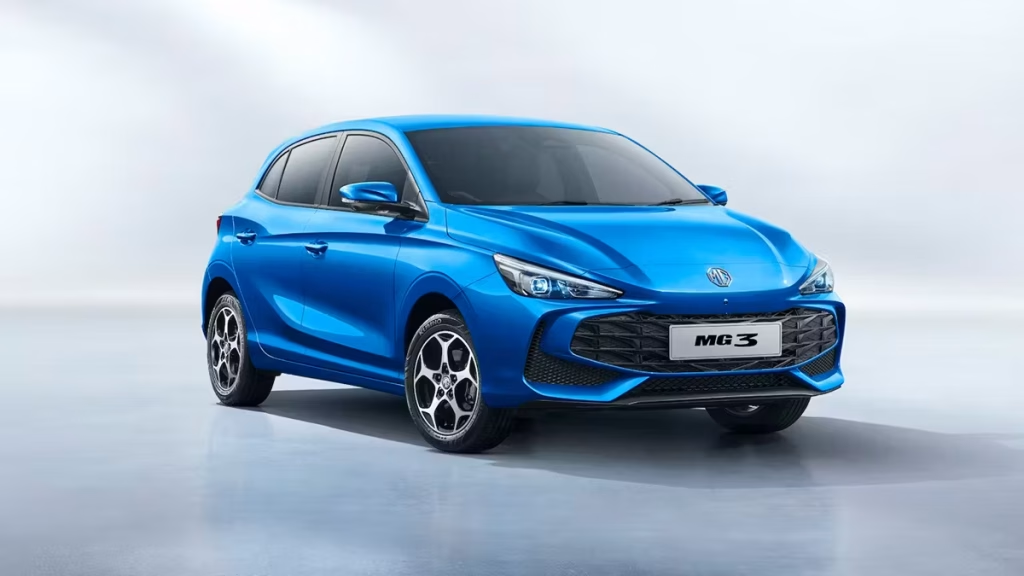
One of the standout features of the MG3 Hybrid+ is its hybrid setup, which allows you to drive mainly on electric power in the city, using little to no petrol.
The e-motor also provides an instant torque boost, which makes the car feel surprisingly quick off the line. Filling up the petrol tank costs about £40, making the MG3 an affordable choice in terms of running costs.
However, as noted in previous reports, there are a few drawbacks. Taller drivers might find it challenging to get comfortable behind the wheel because the steering wheel’s reach cannot be adjusted.
Additionally, the sound system may not meet the expectations of audiophiles, as Ellis found it lacking. Despite these minor issues, the overall cabin quality for the price is good.
The biggest issue with the MG3 Hybrid+ remains its three-speed gearbox. Third gear seems to be reserved for speeds of 65mph and above, which results in a loud, uncomfortable drone when cruising along a B-road at 60mph or less.
Even when the car shifts into top gear, it often kicks down into second. This would be less of an issue if you could manually override the gearbox, but there is no option to do so, which can result in jerky acceleration when the engine takes over from the e-motor.
Fortunately, MG now offers a solution with a non-hybrid version of the MG3. This model comes with a 1.5-litre four-cylinder petrol engine and, importantly, a five-speed manual gearbox.
While the non-hybrid version achieves up to 46.3mpg—nearly 20mpg less than the hybrid variant—it is priced from £16,495, £2,000 cheaper than the hybrid. For those who want a small car and are comfortable with manual gear changes, the non-hybrid MG3 could be a more appealing option. It makes an already good car even better.
Dacia Duster Hybrid
Another standout is the Dacia Duster Hybrid, priced from £24,830, which is the best hybrid for off-roading. The Duster offers a comfortable ride at all speeds, a spacious and well-designed interior, and great desirability, especially for those looking for a budget-friendly SUV with hybrid power.
While the Duster has some drawbacks, such as a high boot lip and wind noise at higher speeds, it offers excellent value for money. Its 1.6-litre hybrid powertrain is sourced from parent company Renault and shares a setup with the Dacia Jogger Hybrid, which has proven to be reliable and efficient.
The Duster’s hybrid powertrain allows it to achieve fuel economy figures of over 50mpg, making it a practical choice for families.

For a similar price, the Dacia Jogger Hybrid provides similar capabilities but with an extra pair of seats in the back. Alternatively, buyers can look at small, more expensive SUVs like the Hyundai Kona, Jeep Avenger, or Toyota Yaris Cross, which also offers a four-wheel-drive option.
With the growing variety of hybrid options available, it’s easier than ever to find a car that suits both your driving needs and budget.
The advancements in hybrid technology continue to make these vehicles an appealing choice for drivers seeking better efficiency without fully committing to an electric car.
Renault Clio E-Tech
The Renault Clio E-Tech, priced from £21,895, stands out as the best for driving experience in the hybrid supermini market. While its exterior closely resembles its predecessor, especially after a recent facelift, significant updates under the skin have elevated its performance.
The Clio E-Tech features a full-hybrid powertrain that combines a 1.6-litre petrol engine with an electric motor, producing 143bhp. This hybrid system delivers over 60mpg and allows the Clio to accelerate from 0-62mph in under 10 seconds.
The driving experience is engaging, with the well-tuned suspension offering a balance of comfort and precision. Inside, the cabin quality is impressive, and the five-door design provides ample rear legroom for adults, along with a 301-litre boot in hybrid form.
While the Clio faces competition from hybrids like the Toyota Yaris and MG3, and alternatives like the Suzuki Swift mild hybrid, it remains a standout due to its blend of driving pleasure, fuel efficiency, and value for money.
The Renault Clio E-TECH is part of the growing trend of hybrid hatchbacks that have emerged in recent years.
Not long ago, this was a niche market, but with stricter emissions regulations, updated tax policies, and evolving consumer preferences, electrified cars like the Clio are now gaining widespread popularity.
Similar to the Clio, the latest versions of the Toyota Yaris and Honda Jazz are also hybrid-only, although traditional competitors like the Volkswagen Polo and the recently discounted Ford Fiesta have yet to make the transition.
The Clio E-TECH carries the same E-TECH badge as other Renault hybrids and electric vehicles, but unlike the plug-in hybrid version of the Captur compact SUV, the Clio is only available as a full-hybrid.
It is powered by a 1.6-litre four-cylinder petrol engine combined with two electric motors and a small 1.2kWh lithium-ion battery, producing a total of 143bhp.
This setup is similar to that of the Toyota Yaris, and it performs well in the compact Clio. The hybrid Clio emits between 99 and 100g/km of CO2 and offers a fuel economy of 63 to 64mpg, depending on the chosen trim level.
The Clio E-TECH features an innovative, Formula 1-derived, clutchless gearbox, which is sophisticated enough to have two ratios for the main electric motor and four for the petrol engine, offering a total of 15 operating modes, including a pure-electric mode.
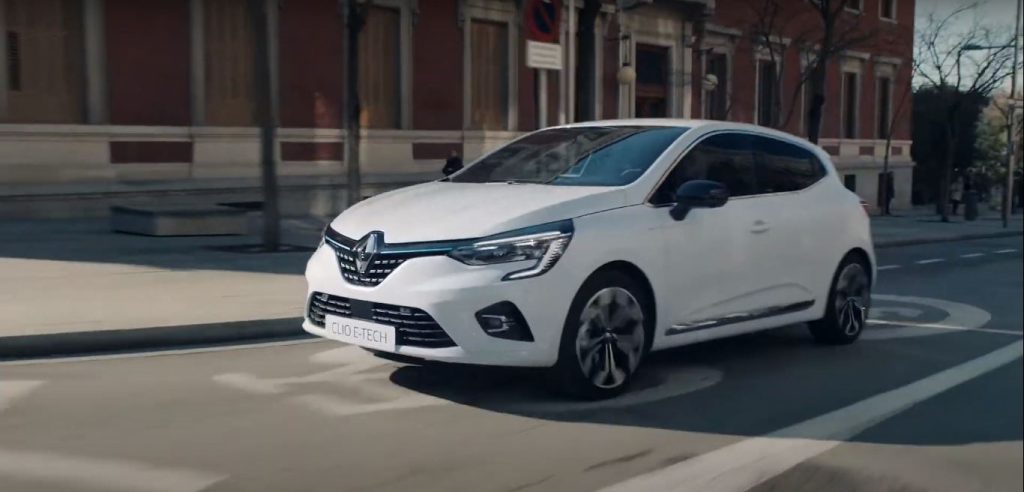
While this may sound complex, driving the Clio is straightforward—you simply press the right pedal to accelerate and the left pedal to stop, much like any car with an automatic transmission.
One notable feature of the Clio E-TECH is that it cannot be plugged in to recharge. Instead, the battery is charged through regenerative braking and the car’s forward momentum.
This allows the car to run on electric power for short distances and at speeds up to 40mph. Renault claims that the Clio hybrid can run on electric power for up to 80% of a typical urban journey, though the engine always needs to start at some point to recharge the battery.
Inside, the Clio remains as impressive as ever, with one of the best interiors in its class. However, the hybrid version’s 301-litre boot capacity is smaller than the 391 litres offered by the petrol model, due to the space required for the battery pack.
The hybrid Clio is available in four trim levels: Evolution, Techno, R.S. Line, and E-TECH Engineered.
With its excellent real-world fuel economy, stylish exterior and interior, decent practicality, and enjoyable driving experience, the Clio E-TECH stands out as a strong contender in the growing market of electrified superminis. While enthusiasts may still prefer the simpler petrol engine, the hybrid version is likely to attract many new fans.
Toyota Yaris
The Toyota Yaris, starting at £23,445, excels in fuel economy, offering up to 70.6mpg thanks to its petrol-electric powertrain, which features a 1.5-litre petrol engine and an electric motor, working together through a power-split ‘e-CVT’ gearbox.
This setup provides a smooth and lively driving experience, making the Yaris one of the more fun-to-drive cars in its class. The Yaris is particularly suited for city driving but can also handle motorway trips with ease, making it a practical and versatile choice.
Though the Yaris faces competition from the Renault Clio E-Tech and the more affordable MG3, as well as other models like the Honda Jazz and Volkswagen Polo, its blend of style, efficiency, and value positions it as a strong contender in the small car category.
If you’re in the market for a small car but can’t decide between a traditional petrol engine or going fully electric, the Toyota Yaris Hybrid might be the ideal solution.
As a conventional hybrid, the Yaris can operate on petrol like any standard car but also has the ability to run on electric power alone for short, low-speed journeys. This is possible because Toyota has managed to integrate both a battery and motor alongside its 1.5-litre engine.
Toyota has long been a pioneer in hybrid technology, and the fourth-generation Yaris continues this legacy with outstanding efficiency.
In fact, it posted one of the best efficiency figures in Real MPG testing. However, while the Yaris is undoubtedly an economical option, it has historically struggled to outperform the top small cars in other areas.
Rivals like the VW Polo offer better comfort and interior quality, the Honda Jazz leads in practicality, and the Renault Clio has consistently delivered more value for money.
The Yaris Hybrid has some key advantages. Its real-world fuel economy is excellent, Toyota’s reputation for reliability is unmatched, and it comes with generous standard equipment. That said, it still doesn’t quite match the VW Polo in terms of ride comfort or cabin quality.
It also feels cramped inside, particularly in comparison with the Honda Jazz. For most buyers, the entry-level engine paired with the mid-range Design trim will offer the best balance of performance and value.
The car excels in a few important areas, including fuel economy, Toyota’s strong reliability record, and slow predicted depreciation.
On the downside, it has a firm ride—especially in higher-spec models with larger wheels—limited space in the rear seats, and only average interior quality. Pricing starts from around £21,000, with leasing options from £257 per month. The Toyota Yaris 1.5 Hybrid Design 5dr CVT, priced at £23,445, is a standout version in the range.
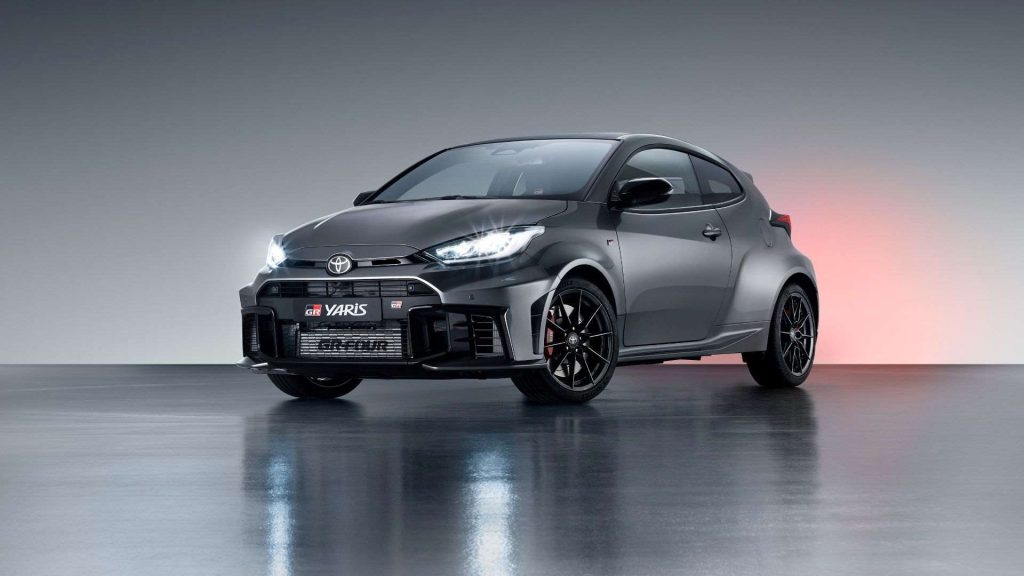
In terms of driving, the Yaris Hybrid performs well. The standard model is powered by a 114bhp 1.5-litre three-cylinder petrol engine paired with an electric motor.
A more powerful 128bhp version, known as the Yaris Hybrid 130, is also available. The hybrid system responds instantly when you press the accelerator, allowing for quick initial acceleration.
The base model goes from 0-60mph in 9.7 seconds, while the more powerful version cuts that time by half a second. All variants come with a CVT automatic gearbox, which is responsive but tends to keep the engine revving high under hard acceleration, making it noisy at times.
Ride quality varies across trims. Icon and Design versions come with 16-inch alloy wheels and a standard suspension setup, giving the car a relatively firm ride. It tends to follow the contours of the road closely, leading to a slightly bumpy experience compared to the smoother Honda Jazz or VW Polo. However, it’s not overly uncomfortable.
Higher trims like Excel, GR Sport, and Premiere Edition come with larger wheels—17-inch on most and 18-inch on the GR Sport—which make the ride even firmer and more jarring, especially over potholes and uneven city roads. Fortunately, the ride does improve at motorway speeds.
For a smoother balance between ride quality and handling, the Audi A1 offers one of the best ride experiences in this class and is priced similarly to the Yaris. If you’re set on a hybrid, the Honda Jazz remains a worthy alternative.
In terms of handling, while the Yaris isn’t the most fun car to drive in its category, it does feel composed and stable when driven quickly on twisty roads. It maintains decent grip and keeps body lean in check, offering a more controlled experience than the Polo in sharper bends.
However, the Yaris falls short of the driving enjoyment provided by the Renault Clio and Seat Ibiza. These competitors feel more agile and have sharper steering, which makes them more engaging to drive.
Still, the Yaris holds its own as a practical and efficient choice in the small hybrid car segment, offering a solid mix of economy, reliability, and usable everyday features.
Honda Civic
The Honda Civic, with prices starting at £35,780, is highly regarded for its efficient hybrid powertrain, making it one of the top family hatchbacks and a strong contender in the hybrid category.
It features a 2.0-litre petrol engine paired with two electric motors and a 1.06kWh battery, providing 181bhp. The Civic spends much of its time in full-electric mode in urban settings, offering excellent fuel efficiency.
Inside, the Civic boasts a high-quality interior with improved materials and a more refined infotainment system. The fastback design provides ample space for passengers, with a s
The Civic stands out for its quality, driver appeal, and long-lasting reliability. While competitors like the Ford Focus offer more fun to drive, and the Toyota Corolla delivers better economy, the Civic strikes a solid balance.
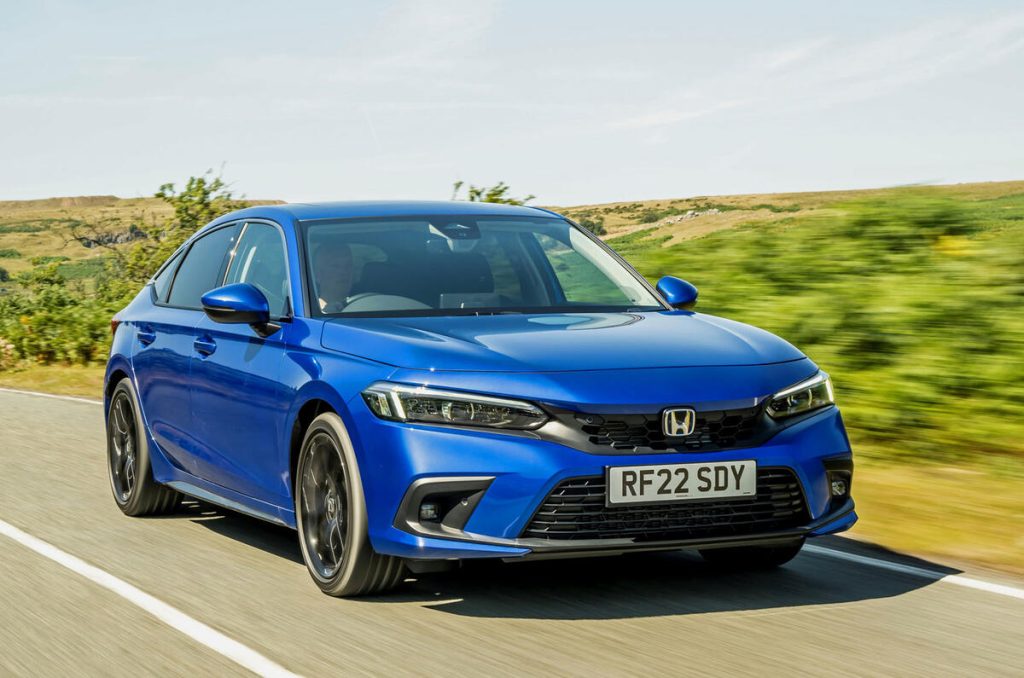
Premium rivals like the Volkswagen Golf or BMW 1 Series may offer more prestige, but the Civic remains a top choice for those seeking a reliable and well-rounded hybrid.
Also Read: 10 Vehicles That Don’t Let You Disable Auto Stop-Start
5 Hybrid Cars That Might Fail You
Not all hybrid cars are created equal. While some offer excellent fuel efficiency, reliability, and performance, others fail to live up to expectations. With so many options available, it can be challenging to distinguish between the good and the not-so-good choices.
The following models, despite their eco-friendly appeal, have been associated with various issues that potential buyers should be aware of—and possibly avoid.
2020 Ford Escape Hybrid
The 2020 Ford Escape Hybrid is a fuel-efficient SUV praised for its impressive fuel economy. However, it has also been plagued with a few significant problems.
The most commonly reported issue involves the SUV’s transmission. Owners have reported experiencing rough and abrupt shifting, with some needing to rebuild or replace the entire transmission.
Quicker isn’t always better, and the 2020 Ford Escape proves this with one of its slower trims standing out as among the best. That said, the 2020 Escape Hybrid comes with a few notable caveats—at least for now.
With the departure of the tall C-Max hatchback, the new Escape Hybrid offers something unique for compact crossover shoppers looking for a slightly different option.
As the only real rival to the Toyota RAV4 Hybrid until the arrival of the 2020 Honda CR-V Hybrid, we put the 2020 Ford Escape Hybrid to the test to see how it stacks up.
One of the Escape’s standout features is the new plug-in hybrid version, a compelling option that promises an all-electric range of at least 30 miles before the gas engine activates. In practical terms, this means that people with shorter commutes can potentially go to and from work without using any gasoline at all.
That’s an exciting proposition. It’s promising technology that we’re eager to test further; for context, the Mitsubishi Outlander currently offers a 22-mile electric-only range.
Meanwhile, the more affordable, non-plug-in Escape Hybrid starts at under $30,000 in the SE Sport trim. For those who aren’t enamored with the 250-horsepower 2.0-liter turbocharged engine, the hybrid powertrain is also available in the upscale Titanium trim.
The 2020 Escape Hybrid’s 0 to 60 mph acceleration time is 8.7 seconds—nearly two seconds slower than the turbocharged 2.0-liter model, which hits the mark in 6.9 seconds.
Still, the hybrid might be the smarter buy, particularly since the 2.0T’s speed and value don’t quite match up to the Mazda CX-5 Signature, which also features a turbocharged engine. In our tests, the all-wheel-drive Escape Hybrid was just over a second slower than the Toyota RAV4 Hybrid, which reached 60 mph in 7.5 seconds.
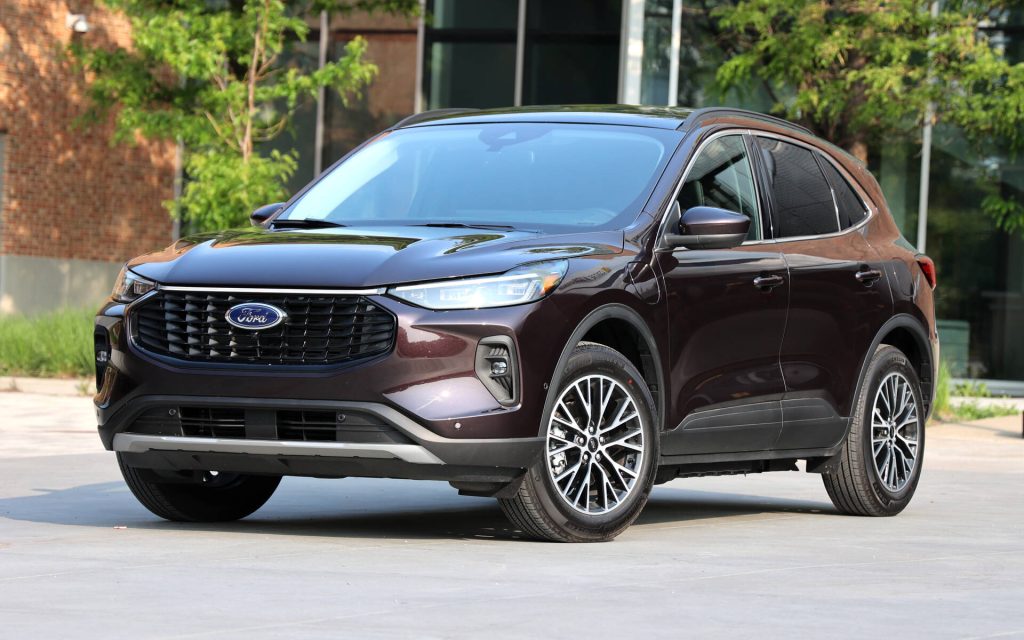
Considering that the average hybrid driver may not prioritize aggressive acceleration as much as buyers of the 2.0T version, this performance gap might not matter much to potential owners.
Fuel economy is a major selling point, though official EPA ratings weren’t available at the time of writing. However, we know the 2020 Escape Hybrid is designed to compete with the RAV4 Hybrid, which was rated at 41 mpg in the city and 38 mpg on the highway for the 2019 model year in its sole all-wheel-drive configuration.
Unlike Toyota, Ford offers its hybrid SUV with both front-wheel-drive and all-wheel-drive options; the plug-in variant, however, is front-wheel-drive only.
When it comes to braking, Ford deserves praise for creating a system that feels much like a traditional non-hybrid brake setup. This holds true almost to the end of the pedal’s travel, at which point the brakes bite more sharply than hybrid newcomers might expect.
In our testing, the Escape Hybrid stopped from 60 mph in 122 feet—a better result than the 123 feet of the 2.0T and the 128 feet of the 1.5T. The hybrid does give up a bit of the light, agile handling found in the 1.5T and 2.0T models, but otherwise, it drives well.
It’s best enjoyed with a more relaxed driving style, as aggressive transitions from braking to acceleration—such as making a rolling stop before suddenly speeding up—can produce some unrefined behavior.
This performance is nearly identical to the front-wheel-drive Escape 1.5T, which finished in 28.2 seconds at 0.62 g. However, the all-wheel-drive Escape 2.0T performed better, clocking in at 27.7 seconds with an average grip of 0.64 g.
The hybrid feels generally responsive, but neither its drivetrain behavior nor its slick 12.3-inch digital instrument cluster can fully mask a sense of cheapness that pervades the cabin.
It’s worth noting that the Escapes we tested were pre-production prototypes, so there’s a chance that some of these interior issues could be addressed in the final production models.
However, the Escape does make some compromises when it comes to cargo capacity. The Toyota RAV4 Hybrid offers between 37.0 and 37.6 cubic feet of storage space behind the rear seats, while the 2020 Escape Hybrid and plug-in hybrid provide only 30.7 to 34.4 cubic feet.
Both versions of the Escape offer the same cargo area, with the variation depending on how far forward the rear seats are positioned. To answer a common question: hybrid Escapes have between 2.8 and 3.1 cubic feet less cargo room than their non-hybrid counterparts.
It’s not a particularly strong showing if you’re comparing the Escape Hybrid directly with the RAV4 Hybrid. Still, that may not be how most buyers shop.
The new Ford Escape has evolved significantly from the boxy first-generation model, now featuring a softer, more suburban design that contrasts with the rugged aesthetic of the RAV4. The Toyota may be quicker and offer more cargo space, but whether it—or the upcoming CR-V Hybrid—is also more efficient remains to be seen.
Until the EPA releases fuel economy figures for the Escape Hybrid, we can tentatively recommend it. If its limitations don’t bother you, the Escape’s styling and hybrid powertrain might just make it the standout choice in Ford’s diverse SUV lineup.
2011-2015 Volkswagen Touareg Hybrid
This hybrid model was initially appealing due to its speed, but the severity of its recalls made it less desirable. The primary issue was the lack of proper drainage under the battery, leading to short circuits and, in some cases, fires.
“VW determined water could enter without the rear hatch open because the sunroof drains and rear lid seals weren’t assembled correctly”.
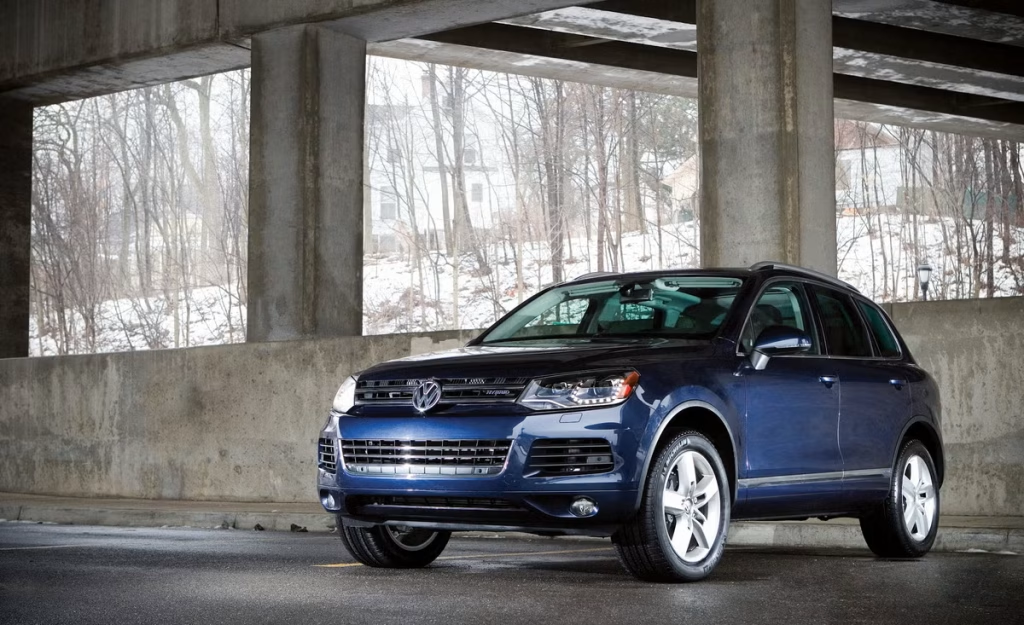
Additionally, there was a recall for a missing clip for the brake pedal pivot pin, which allowed the brake pedal to come off, and another for a leak in the fuel injection system.
2018 Chrysler Pacifica Hybrid
As the only plug-in hybrid minivan on the market, the Chrysler Pacifica Hybrid offers great practicality and above-average EV range.
However, it has been subject to multiple recalls and has experienced issues with its hybrid battery. Another common complaint from owners involves problems with the electrical system, which is particularly concerning given the vehicle’s hybrid nature.
2018 Chevrolet Malibu Hybrid
Owners of the 2018 Chevrolet Malibu appreciate its spacious interior and excellent fuel economy. However, some owners have reported engine failures and issues with the fuel sensor.
There have also been reports of reduced power, which could lead to dangerous situations on the road. The 2018 Chevrolet Malibu has also had six recalls, including one for leaking transmission fluid.
Despite some positive reviews, the overall consensus points to reliability concerns with this vehicle.
The 2018 Chevrolet Malibu distinguishes itself in the midsize sedan segment with its sleek design and well-rounded list of appealing features. It comes equipped with a wealth of technology and boasts a spacious interior.
Additionally, buyers can choose from a variety of engines, including a fuel-efficient hybrid option. Taken as a whole, we believe the Malibu is a strong contender in its class.
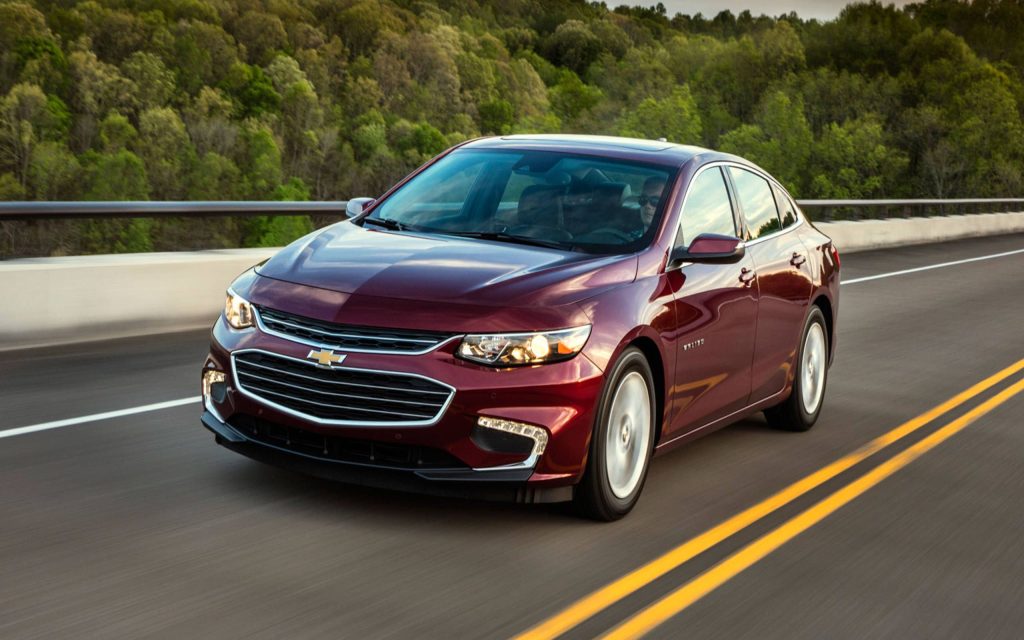
Since its full redesign for the 2016 model year, the current-generation Chevrolet Malibu has remained a competitive option among midsize sedans.
While some competitors might offer sharper driving dynamics or more features for the price, the Malibu stands out as a stylish and balanced offering.
Chevrolet has done a commendable job of outfitting nearly all trims—except for the base model—with a generous array of desirable features. As a result, finding a Malibu equipped with the amenities you want shouldn’t be difficult.
We’re also impressed by how the Malibu drives, particularly the acceleration from the available 2.0-liter turbocharged four-cylinder engine, which delivers unexpectedly brisk performance.
Meanwhile, the Malibu Hybrid offers a smooth and refined driving experience and achieves an excellent 45 mpg combined, making it an appealing choice for efficiency-minded drivers.
2017 BMW X5 Hybrid
The 2017 BMW X5 Hybrid is a luxury SUV known for its strong performance and luxurious cabin. The vehicle offers a comfortable ride and sporty handling.
However, owners have reported issues with the brakes, including pulsation or vibration, problems with the antilock braking system, and squeaking or brake failure. These brake-related issues can significantly impact the vehicle’s overall reliability and safety.
For the 2017 model year, the BMW X5 receives only a few minor updates. It now includes a Wi-Fi hotspot and a wireless charging pad as standard features, but the previously available Active Steering (four-wheel steering) option has been discontinued.
The BMW X5 may not have been the original luxury SUV, but it has firmly established itself as one of the top contenders in its segment.
The 2017 BMW X5 lineup continues this legacy by offering a combination of family-friendly comfort and convenience features along with powerful performance and an engaging driving experience that appeals to enthusiasts.
This high level of excellence does come with a hefty price tag—the X5’s starting price exceeds $56,000. Its overall value is somewhat tempered by its relatively tight optional third-row seating, which may not meet the needs of all families.
However, it’s worth noting that the 2017 BMW X5 is no longer the freshest entry in the luxury SUV field. Several competitors have recently been redesigned or significantly updated, making the competition fiercer than ever.
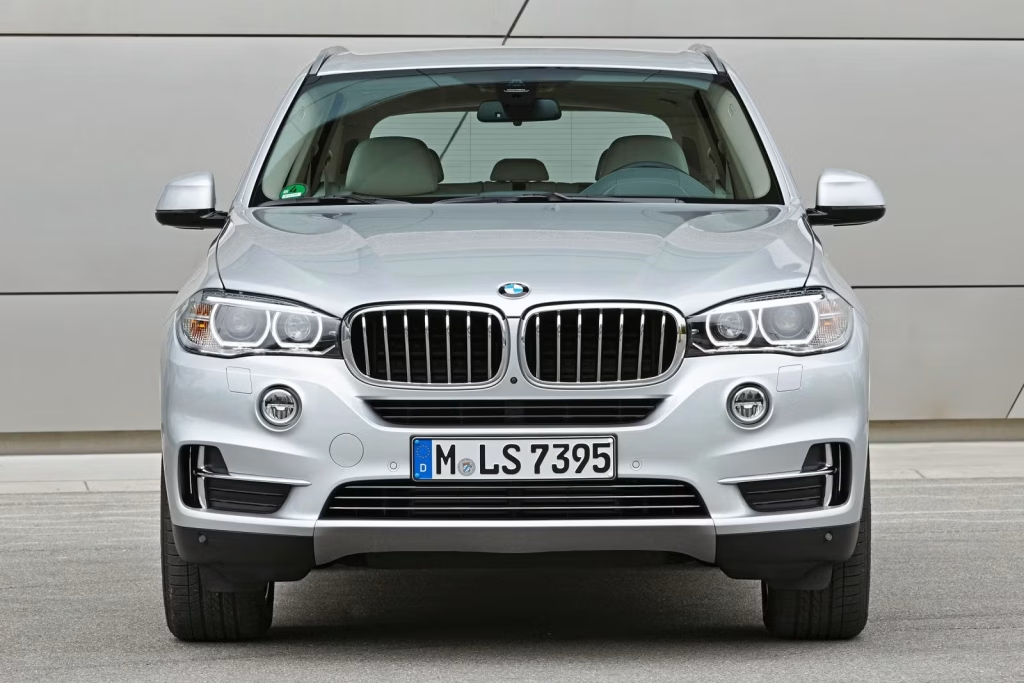
Among the most noteworthy challengers are the Audi Q7 and Porsche Cayenne, both of which have earned high praise. Shoppers might also want to consider the Mercedes-Benz GLE-Class and the Volvo XC90, depending on their individual needs and preferences.
Every 2017 BMW X5 comes standard with a comprehensive list of safety features. These include stability and traction control, antilock brakes, automatic brake drying, front side airbags, side curtain airbags, active head restraints, and BMW Assist and Remote Services emergency telematics.
All models equipped with xDrive all-wheel drive also include hill descent control for added safety on steep terrain.
The available Driver Assistance package enhances safety and convenience by adding a rearview camera and a head-up display.
For even more advanced safety technology, the Driver Assistance Plus package builds on this by including blind-spot monitoring, a top-down surround-view camera system, lane departure warning, speed limit information, and a forward collision warning and mitigation system.
This latter system features pedestrian detection and can automatically apply the brakes at low speeds to help prevent or reduce the severity of an impact.
In government crash tests, the X5 earned an impressive five out of five stars for overall protection, including front and side impact. It received four stars for rollover resistance.
The Insurance Institute for Highway Safety (IIHS) also gave the X5 its highest rating of Good in both the moderate-overlap front-impact and side-impact crash tests. Additionally, the optional forward collision mitigation system received the top score of Superior.
Overall, the 2017 BMW X5 continues to hold its place as a well-rounded and desirable luxury SUV, thanks to its blend of comfort, performance, and safety, even in the face of increasingly capable competitors.

